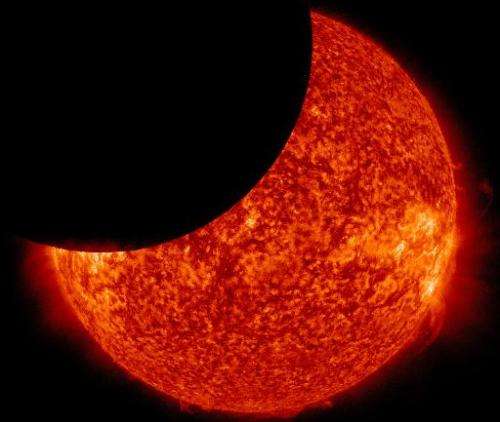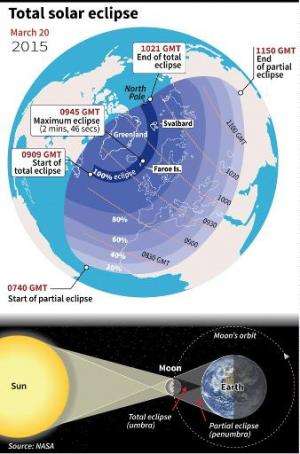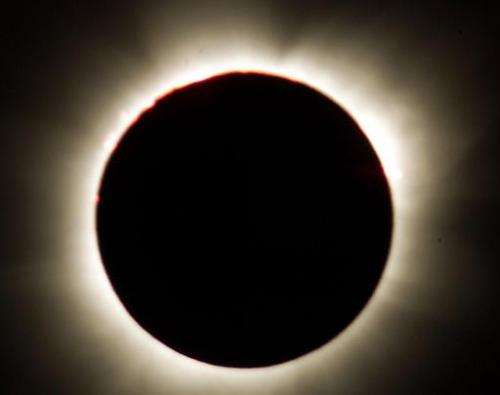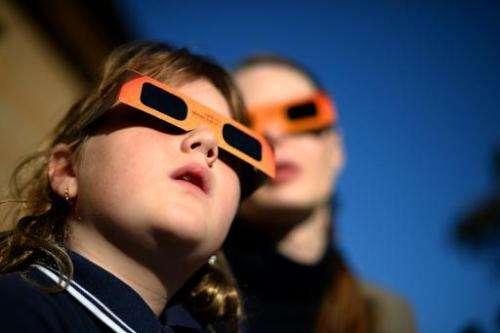Seeking the dark, eclipse junkies head for the Arctic

Die-hard eclipse junkies from around the world are expected to brave polar bears and frostbite in the Arctic on Friday to savour three minutes of total darkness when the moon totally blocks the sun.
The Norwegian archipelago of Svalbard, located 1,300 kilometres (800 miles) from the North Pole, is, along with the Faroe Islands, the only place the total eclipse will be visible.
Elsewhere only a partial eclipse will be seen at best.
Svalbard's population will almost double for the eclipse, as 1,500 to 2,000 visitors are expected to fly in to watch the phenomenon that has fascinated mankind since the beginning of time.
The total eclipse, the only one this year, is expected to begin in Svalbard at 11:11 am (1011 GMT).
Agnese Zalcmane, a 30-year-old IT employee from Latvia who already has four eclipses under her belt, is one of those who has made the trip to Svalbard, along with seven friends.
"I love the feeling. It's so strange. The sun is there but it's not there. There's a ring around it, the diamond ring, that looks amazing. There are no words to describe it," says Zalcmane, who has already travelled to Siberia, China, Australia and Kenya to follow her passion.
An eclipse is something "you can't order."
"It just happens. Nowadays you can buy pretty much everything but you just can't buy that," she gushes.
While you can't buy an eclipse, you can put a price on it.

In Longyearbyen, Svalbard's main town with 2,100 inhabitants, hotels have been almost fully booked for years ahead of the event, and the few available rooms are now going for astronomical rates: 5,000 kroner ($600, 572 euros) a night for a double room and up to five times more for an apartment on the rental website Airbnb.
"We're very concerned that people will arrive here without making sure they have a roof over their heads," says Ronny Brunvoll, the head of the Visit Svalbard tourism association.
"People have to understand that we are a small village close to the North Pole and we can't just build a new hotel or redirect them to a neighbouring village."
'Great mysteries of astronomy'
Located at 78 degrees North, temperatures in Svalbard can fall to -20 degrees Celsius (-4 degrees Fahrenheit) at this time of year in the tundra, where roaming polar bears pose a real threat to people.
In the past four decades, there have been five deadly polar bear attacks in the archipelago.
Nowadays, people must either carry a rifle or be accompanied by an armed guide if they want to leave inhabited areas.
"In the past few months, there have been several bears close to and even in Longyearbyen. The danger (of an attack) exists even if the chances are small," Brunvoll says.
The threat does not seem to have dissuaded tourists though, with some already arriving from as far away as Japan, Australia and the United States.

The Faroe Islands, a Danish autonomous territory located north of Britain and home to 50,000 people, is also expecting a surge of more than 8,000 eclipse tourists, according to tourism officials.
US astronomer Victoria Sahami, a tour leader for the Sirius Travel agency specialised in astronomic tourism, said the phenomenon is primarily attracting "die-hard eclipse chasers".
"I think that this is probably because of the location, the time of year, and the weather prospects," she explains.
"Such considerations often determine whether the eclipse chaser will bring their family or not, and it will not appeal to many eclipse chasers who are not totally committed to their hobby."

The eclipse will provide scientists an opportunity to try to resolve a longstanding riddle: Why is the sun's corona, a ring of plasma located thousands of kilometres away from it, much, much hotter—up to 2 million degrees Celsius—than the sun's surface, at "just" 6,000 degrees?
"The difference between the temperature of the sun and that of the sun's corona is one of the great mysteries of astronomy," says Huw Morgan of Aberystwyth University in Wales.
"A total eclipse gives us a unique opportunity to measure the corona of the sun in so much detail and collect data that will enable us to better understand this difference," he said.
It remains to be seen if the weather will cooperate for the eclipse: the forecast is for partially cloudy weather on Friday in the Faroe Islands and Svalbard, which just happens to be emerging from four months of winter darkness.
© 2015 AFP




















